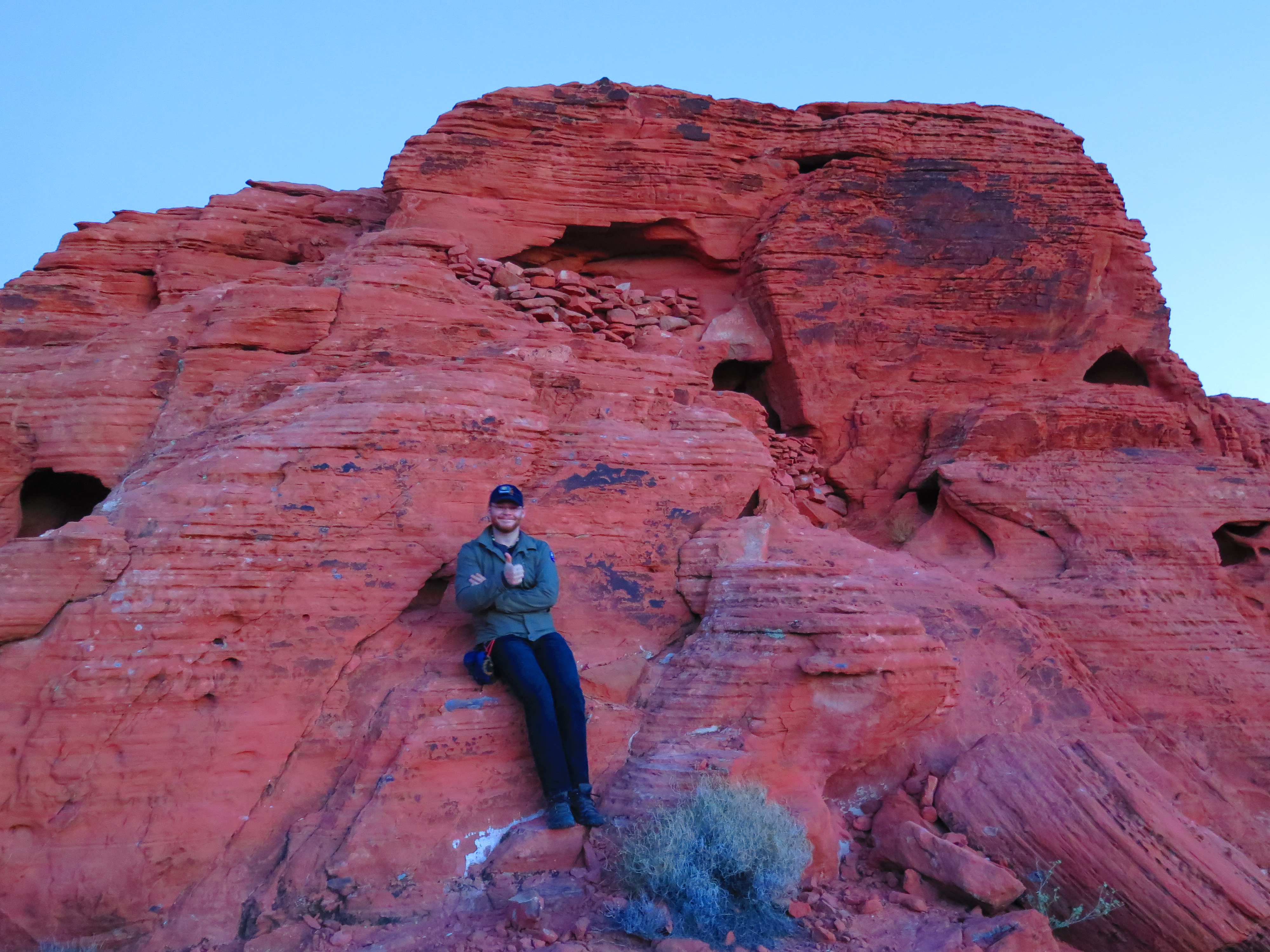Hello folks!
I know I promised that I’d be doing a bit of catching up, and although I’ll come back to Denmark and the family’s visit, I wanted to diverge for a post or two and talk about my first couple of weeks back in the U.S.
I arrived home in Arizona in mid December, just as the country was gearing up for Christmas and the winter holidays. I won’t pretend that this timing wasn’t shock city, or that it was an easy adjustment. I’d barely been home two weeks when we decided it was time to go and explore some more! Time to get out of the city, away from the radio and technology, and the bustle of Christmas and the New Year and get back out into the beautiful American Wilds! We started packing up, and as Christmas sneaked around the corner, we started off on a Journey to a secret geological wonderland tucked just north of Las Vegas, Nevada.
The Valley of Fire!

(IPhone Shot of the Valley from one of the Campgrounds)
Now, the Valley of Fire State Park is one of the oldest state parks in Nevada. It rightly deserves its designation as a National Landmark. The park itself isn’t that large, as it only covers an area of around 42,000 acres and it was dedicated in 1935. It derives its name from red sandstone formations, formed from great shifting sand dunes, I’ll talk a little more about the geology in a bit!
The Valley of Fire should be better known, as it is located just 50 miles (80 km) northeast of Las Vegas. The park itself is tucked away and surrounded by the Lake Mead National Recreation Area. I’m not a Geologist so I’ve borrowed from the public domain to bring you a Geologists explanation of how the Valley of Fire came to be! “Complex uplifting and faulting of the region, followed by extensive erosion, have created the present landscape. The rough floor and jagged walls of the park contain brilliant formations of eroded sandstone and sand dunes more than 150 million years old. Other important rock formations include limestones, shales, and conglomerates.” According to The US Geological Survey’s capsule history of the region, “the park displays red sandstones exposed beneath the Sevier fold-thrust belt, where older rocks of Cambrian age (about 500 million years old) were pushed sideways on a thrust fault over younger rocks (Jurassic, about 160 million years old) of the Aztec Sandstone. The sandstone was laid down in a colossal, long-lived sandy desert like today’s Sahara or Arabia. The red color is from the presence of iron oxides in the sand. These Geologic events have provided us with a spectacular park and view today! The basin surrounded by the older rock lays ontop of the younger rock and gives a border effect, leaving the younger rock to erode and develop!
Driving into the park is easy, and with a quick stop to pay the park fees we wandered in, filled with awe and wonder.
We settled into the right camping spot, and as the evening sun began to dip beneath the horizon, we hurried to make an evening hike. Enthralled by the beauty of the area, and excited to explore it over the next week, we watched the sunset and then headed back to our camper for a relaxing evening. During our stay we had a couple of Camp Fires, relaxing and enjoying all the evening had to offer.
As the next day dawned it was out and about, and time for another hike.

(The Author C. Descry, walking among the rocks).
We were soon joined by our friends, and continued our days and evening of exploration. I even found myself wandering to the heights of a nearby outcropping, and looking out across the valley as the evening settled in upon us.

(Evening Bootshot – Valley of Fire January 2015)
The Valley is full of wonders, and beauty – with rocks that are of unbelievable, and narrow washes that display the geologic history of the region:
It’s definitely highly recommended!





Leave a Reply